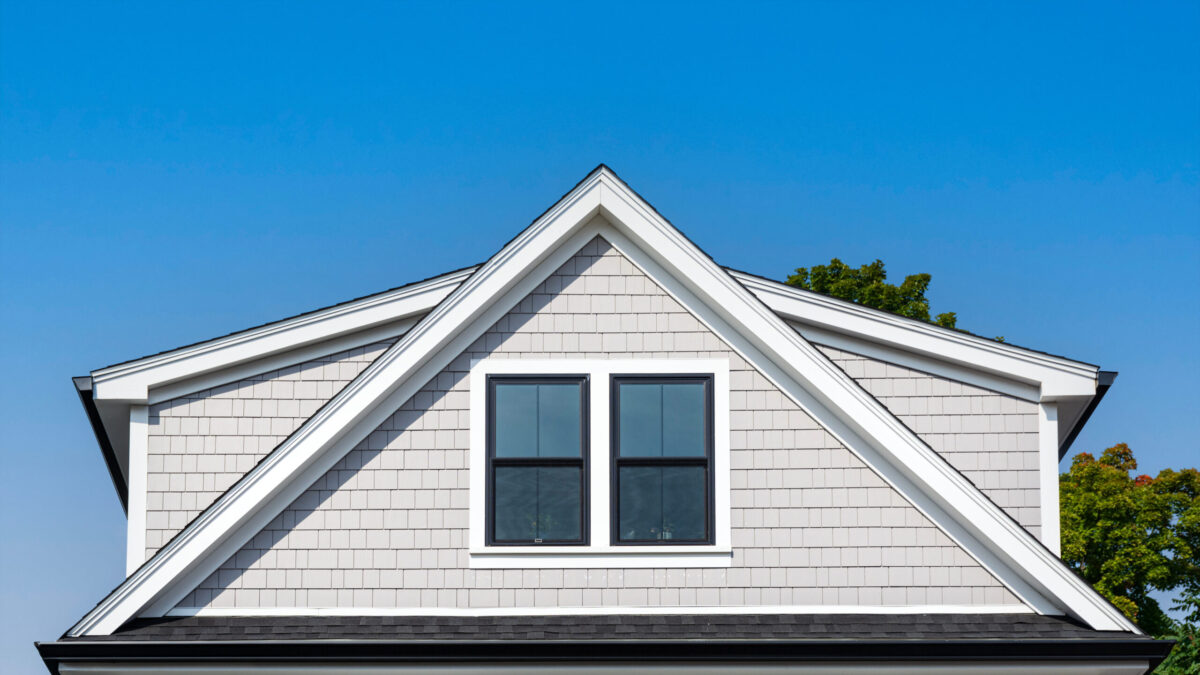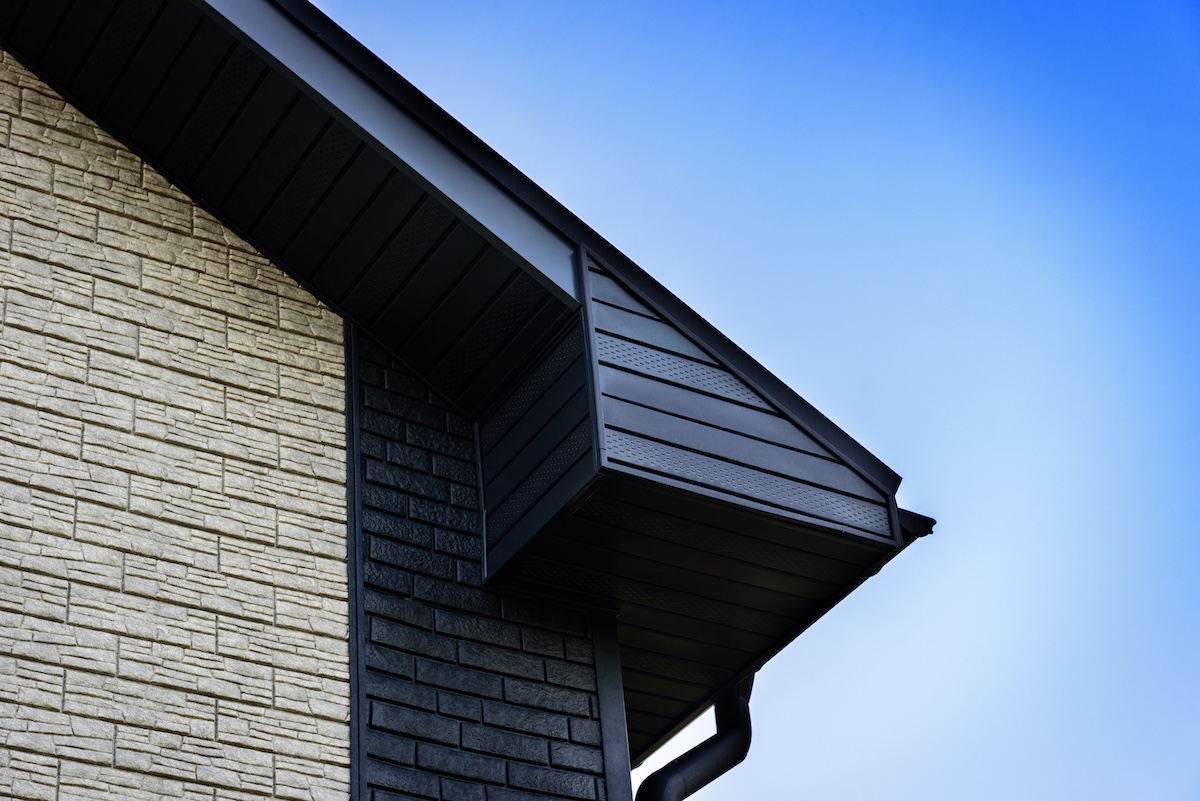Understanding your home’s roofing components can save you thousands in repairs and help you make informed decisions about maintenance. One crucial element that many homeowners overlook is the fascia on a house – a vital component that protects your roof’s edge and enhances your home’s curb appeal.
This comprehensive guide will cover:
- What fascia is and why it matters for your home
- The key components of fascia systems
- Signs of fascia damage and repair solutions
- How fascia works with other roofing elements
- Professional maintenance tips
🏠 Why Understanding Fascia Is Important

Fascia plays a critical role in your home’s structural integrity and weather protection. This horizontal board runs along the roofline where your roof meets the outer walls, serving as both a functional barrier and aesthetic element.
Understanding fascia helps you identify potential problems early and communicate effectively with contractors. Here are the key benefits of maintaining proper fascia:
- Weather Protection: Shields your home from water damage by preventing leaks into the roof decking and interior walls, ensuring long-term durability.
- Pest Control: Acts as a barrier to keep birds, squirrels, and insects from entering your home through gaps, protecting your space from infestations.
- Structural Support: Offers a sturdy surface to securely mount gutters and downspouts, ensuring proper water drainage and preventing damage to your foundation.
- Curb Appeal: Enhances the visual appeal of your home by creating a clean, polished look along rooflines, improving overall aesthetics.
- Property Value: Maintained fascia not only looks great but also adds value to your home by signaling good upkeep to potential buyers.
⭐️ 7 Essential Facts About House Fascia

Let’s explore the fundamental aspects of fascia that every homeowner should understand. These key points will help you recognize, maintain, and repair this important roofing component.
1. What Fascia Actually Is
Fascia is the vertical board that runs along the edge of your roof, capping the ends of rafters and acting as a protective barrier. It plays a vital role in the overall structure of your home and contributes to both its functionality and aesthetics. By shielding the roof edge from weather exposure, fascia also provides an essential mounting surface for gutter systems, which direct water away from your home.
- Materials commonly include wood, composite materials, aluminum, or vinyl, each offering different benefits in terms of durability and maintenance.
- Fascia boards typically range in size from 1×6 to 1×12 inches in dimension, depending on the specific needs of your roofline.
2. Primary Functions of Fascia
Fascia isn’t just for looks—it serves multiple critical purposes that protect your home from damage caused by the elements. Its functional importance cannot be overstated, especially when it comes to preventing costly repairs over time.
- Acts as a protective barrier, shielding roof decking and interior components from moisture damage caused by rain, snow, and ice.
- Provides structural support for gutter systems, ensuring proper drainage and reducing the risk of water pooling near your foundation.
- Enhances the overall curb appeal of your home by creating a clean and finished edge along the roofline.
3. Common Fascia Materials
The material you choose for your fascia has a significant impact on its longevity, maintenance needs, and ability to withstand your local climate. Selecting the right material ensures better performance and reduces the risk of future problems.
- Wood fascia: Offers a classic, traditional look but requires regular maintenance, such as painting or staining, to prevent rot and weather damage.
- Composite fascia: Made from a blend of materials, composites are low-maintenance, moisture-resistant, and a durable alternative to wood.
- PVC or vinyl fascia: Lightweight and highly weather-resistant, these materials are great for low-maintenance homes, though they may lack the warmth of natural wood.
- Aluminum fascia: A sturdy, rust-resistant option that works well in areas with heavy rainfall or snow, but may dent under impact.
4. Signs of Fascia Damage
Recognizing the early signs of fascia damage is essential to avoiding expensive repairs down the road. During routine home inspections, keep an eye out for the following issues:
- Peeling or flaking paint: This can indicate water infiltration or prolonged exposure to harsh weather conditions.
- Rot or soft spots in wood fascia: These are clear signs of moisture damage and should be addressed immediately to prevent further deterioration.
- Sagging gutters: Loose or detached gutters may indicate that the fascia is no longer providing adequate support.
- Separation from the roofline: Gaps between the fascia and roof can allow water, pests, or debris to infiltrate your home.
5. Fascia Installation Process
Installing fascia requires precision and attention to detail to ensure it performs well and lasts for years. Proper installation not only enhances durability but also ensures that your home is adequately protected.
- Precise measurements: Fascia boards must be cut accurately to fit snugly along the roofline without gaps.
- Secure fastening: Boards need to be securely attached to the rafter ends to prevent warping or detachment.
- Weatherproofing techniques: Proper sealing, ventilation gaps, and the use of flashing help prevent moisture infiltration and extend the lifespan of the fascia.
- Professional installation: Hiring experienced professionals ensures the job is done correctly and comes with the added benefit of warranty coverage.
6. Maintenance Requirements
Like any part of your home, fascia requires regular upkeep to remain in good condition. Proactive maintenance can save you money by preventing minor issues from escalating into major problems.
- Annual inspections: Check for signs of damage, such as peeling paint, cracks, or rot, and address these issues promptly.
- Repainting or staining: For wood fascia, apply fresh paint or stain every few years to maintain protection against moisture and UV rays.
- Minor repairs: Fix paint chips, reseal joints, or replace small sections of damaged fascia before they lead to larger issues.
7. Replacement Considerations
Sometimes, fascia damage is too extensive to repair, making replacement the most cost-effective solution. Knowing when to repair versus replace is key to maintaining your home’s structural integrity.
- When to replace: Extensive rot, structural damage, or widespread wear and tear often necessitate a full replacement to ensure effective protection.
- Material upgrades: Replacing your fascia is an opportunity to switch to low-maintenance materials such as composite or PVC, which can reduce future upkeep.
- Professional assessment: Consulting with a contractor can help you determine the best course of action and ensure the replacement process is done correctly.
⚡ How Fascia Integrates With Your Roofing System

Fascia doesn’t work alone – it’s part of an integrated system that includes soffits, gutters, and trim boards. Understanding these relationships helps you maintain your entire roof edge system effectively.
Soffit and Fascia Partnership
- Soffits and fascia work together to create complete roof edge protection. Soffits cover the underside of roof overhangs, while fascia covers the outer edge.
- Ventilation Benefits: This combination allows proper attic airflow while blocking pest entry points. Soffit vents pull fresh air into the attic, while ridge vents allow hot air to escape.
Gutter Attachment Points
- Fascia provides essential mounting surfaces for gutter systems. Without sturdy fascia boards, gutters cannot function properly or safely.
- Weight Distribution: Properly installed fascia distributes gutter weight evenly across rafter ends. This prevents sagging and ensures effective water drainage away from your home’s foundation.
Trim and Flashing Integration
- Fascia connects with various trim elements to create weatherproof seals. These connections require careful attention during installation and maintenance.
- Water Management: Proper flashing behind fascia boards directs water away from structural elements. Regular inspection of these connections prevents costly water damage.
💡 Taking Action on Your Home’s Fascia
Understanding fascia components empowers you to maintain your home’s exterior effectively and communicate clearly with roofing professionals. Regular inspections and prompt repairs protect your investment and ensure long-term structural integrity.
Don’t wait until damage becomes extensive and expensive. If you notice signs of fascia problems or need professional assessment of your roof’s condition, contact Maumee River Roofing today. Our certified team provides comprehensive roofing services throughout Indiana and Ohio, ensuring your home stays protected year-round.
